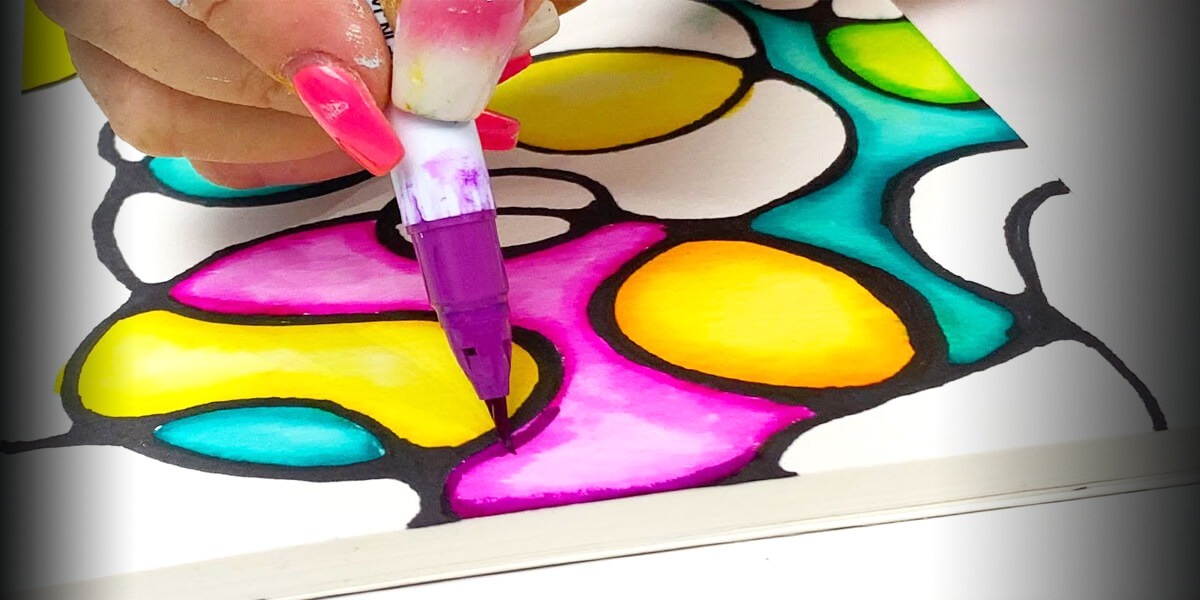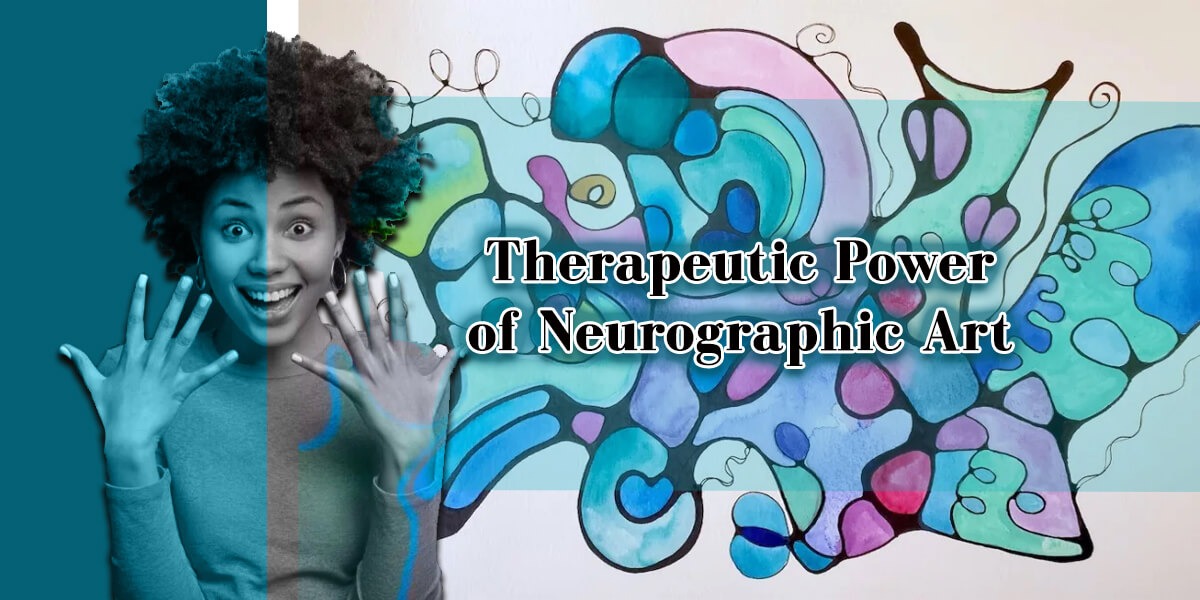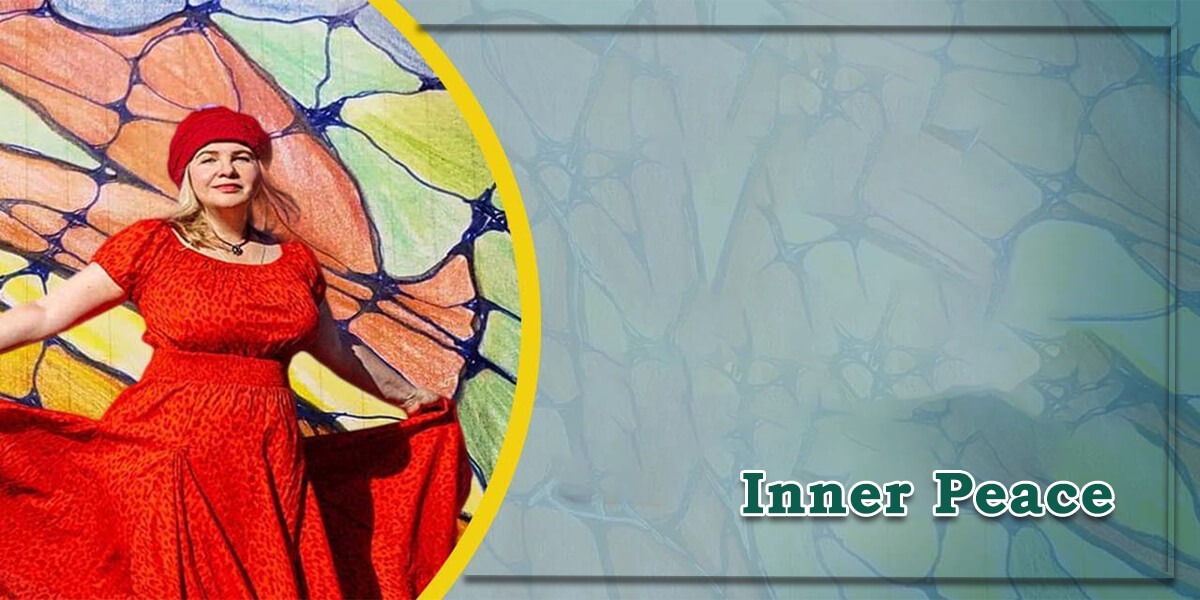Art has long held therapeutic benefits for human well-being. Creating or appreciating artistic works can reduce stress, boost mood, and cultivate self-expression. In recent years, a new form of art therapy called neurographic art has emerged, showing particular promise for healing trauma and mental health conditions.
Neurographic art is the way of drawing or painting in which the creator works with the subconscious mind through drawing. According to Hoban-Rich, this creative way of art stimulates the mindful pathways that portray a unique combination of art and psychology. Hence it creates a beautifully illustrated image that starts from inside out and leaves you wondering in its portrayal.
This article will explore the foundations and mechanisms of neurographic art therapy in depth. We’ll examine how specific neurographic methods address trauma, anxiety, depression and other concerns at the neural level. Real stories will illustrate neurographic art’s life-changing impact, while guidance helps you access these benefits.
By understanding neurographic art’s therapeutic power, you can support others on their healing journeys or find solace through creative expression of your own inner worlds. Let’s delve into exploring this innovative approach and its potential for wellness.
What is Neurographic Art?
Neurographic art combines elements of traditional art therapy, cognitive behavioral therapy and expressive arts. However, its basis lies in applying recent neuroscientific understandings to the creative process. Neurographers utilize structured techniques grounded in how our brains form, store and retrieve memories. The goal is to externalize memories and thought patterns through visual representation to facilitate insight and healing.
Some critical aspects of neurography art include:
- It focuses on memories, emotions, and thought patterns related to specific life experiences or conditions. This provides structure compared to freestyle art therapies.
- Using visual mapping and diagramming techniques to translate internal experiences into symbolic visual languages the brain can comprehend. Colors, shapes, symbols, and organization all carry meaning.
- It engages both hemispheres of the brain through blending logic, imagery, and creativity. This activates neural pathways involved in memory, meaning-making, and self-awareness.
- Creating in a step-by-step manner with guidance to establish new neural connections related to the targeted concern. Repeating the process strengthens these connections over time.
- Externalizing memories and thought patterns through art allows the analytical prefrontal cortex to gain perspective. This supports reprocessing traumatic material or unhelpful ways.
- Neurographers may use the resulting artworks to identify recurring themes or thought distortions. Insights emerge to facilitate positive change mentally and emotionally.
Overall, neurographic art accesses the brain’s innate abilities to form representations, find patterns, and rewire itself. By translating inner experiences visually, deeper understanding and healing can occur. Let’s explore specific techniques and how they address trauma, mental health concerns, and overall well-being.
Why do Students Love Neurographic Art?
The Neurographic artworks allows students to roam freely with their painting tools or pencils. This technique is highly effective in making students more relaxed and calmer to enter a meditative state. Students who are learning or practising Neurographic art become more relaxed, and it’s a highly recommended technique to apply during the exam week as well.
Although there is no boundary of when or why you should play with the Neurographic art, this technique does not require any pre-planning or stress on your mind. The results with such type of technique are mostly positive, and its helpful to deal with stress in a state where you cannot say much of the words.
Neurographic Techniques for Trauma
Traumatic memories often lack context and coherent narrative due to how the brain encodes and stores them. This makes trauma challenging to process and resolve through talk therapy alone. Neurographic techniques help trauma survivors restructure traumatic memories and regain a sense of control.
Memory Mapping
Draw a line down the center of a page. On one side, depict a traumatic memory or trigger in images without words. Alternatively, add context, thoughts, emotions, and outcomes using diagrams, colors, and symbols rather than words. This separation supports analyzing the memory objectively while also honoring subjective experiences. Repeating the process strengthens the brain’s ability to integrate trauma into an organized narrative memory.
Thought Shaping
Draw a giant thought bubble. Inside, use shapes, colors, and textures without words to depict recurring traumatic thoughts, beliefs about oneself, flashbacks, or body memories. Outside the bubble, add counter-thoughts and ideas using a different visual language. This externalization of trauma’s mental grip helps one gain perspective to weaken its power.
Identity Webbing
In the center, write qualities vital to one’s identity before trauma. Extend lines outwards, adding attributes lost or changed by the trauma using a different color. Draw new lines extending from the center in a third color, depicting qualities being rebuilt. This honors loss while cultivating hope and resilience.
These techniques support reprocessing traumatic memories and regaining a coherent sense of self after overwhelming experiences. By translating trauma into visual maps, survivors can gain insight and perspective to move toward post-traumatic growth.
Neurographic Techniques for Anxiety and Depression
Anxiety and depressive disorders also benefit from neurographic approaches. Specific techniques help identify and restructure unhelpful thought and belief patterns at the root of these conditions.
Cognitive Mapping
Draw a large head shape. Inside, use colors and symbols without words to depict recurring anxious or depressive thoughts. Draw lines connecting related ideas to form webs or patterns. Analyzing these cognitive maps provides insight into thought distortions and themes like perfectionism or lack of self-worth.
Emotional Spectrum
Create a vertical line with colors representing emotions from the most positive on the top to the most negative on the bottom. Mark where specific thoughts, beliefs, or situations land on this spectrum using shapes or symbols. Note patterns and identify ideas producing disproportionately negative feelings.
Core Belief Webbing
In the center, write a core belief fueling anxiety or depression, like “I’m not good enough.” Extend lines outwards, adding experiences and thoughts providing evidence for and against this belief using different visual languages on each side. Analyzing imbalances supports cultivating a healthier perspective.
These techniques help identify and reframe unhelpful thought patterns at the root of anxiety and depression. By translating cognitions into visual maps, insights emerge to facilitate purposeful changes mentally and behaviorally. Over time, neurographic art strengthens healthier neural pathways.
Read More: AngelList Jobs – Your Roadmap to Remote Startup Jobs
Additional Neurographic Techniques
Beyond specific conditions, neurographic techniques also support overall well-being and self-understanding. Examples include:
Life Mapping: Create a timeline of life chapters, adding insights, relationships, and growth using colors and symbols. Honors life’s journey while cultivating gratitude.
Decisional Balancing: For a dilemma, draw pros on one side and cons on the other using varied visual elements. Weigh options objectively to facilitate the best choice.
Values Clarification: Represent personal values as images or symbols. Reflect regularly to cultivate alignment between actions and priorities.
Dream Interpretation: Recreate a dream visually, then analyze symbolism for insights into unconscious patterns or needs.
Gratitude Journaling: Daily, depict people, experiences, or qualities appreciated using unique visual styles. Shifts focus to abundance.
Self-Care Planning: Represent wellness practices as images—schedule time for activities supporting mental, emotional, and physical balance.

These techniques facilitate self-awareness, perspective, clarity, and well-being by creatively representing inner experiences. Regular neurographic art practice strengthens resilience and life-enriching habits mentally and behaviorally over time.
How Neurographic Art Works Therapeutically
So, how does translating inner experiences visually confer such profound therapeutic benefits? Let’s explore the neurobiological mechanisms underlying neurographic art’s effectiveness.
Memory Reconsolidation
Retrieving a memory makes it labile and open to revision for a limited time. Neurographic techniques support reprocessing traumatic or unhelpful memories. By representing them visually and gaining new perspectives, the memory undergoes reconsolidation, incorporating corrective insights on a neural level.
Prefrontal Cortex Activation
Neurographic art engages the logical, analytical prefrontal cortex through its structured, step-by-step process. This supports gaining perspective on traumatic material, cognitions, or emotions, which typically overwhelm the prefrontal cortex. Analyzing artwork also activates neural networks in insight, problem-solving, and decision-making.
Bilateral Integration
Using both sides of the brain through blending imagery, logic, and creativity establishes new neural pathways. This facilitates integrating traumatic memories, addressing thought distortions, or developing healthier habits on a neural level. Repeating neurographic exercises strengthens these pathways over time.
Externalization
Representing inner experiences visually provides physical distance from them. This lets one observe patterns objectively rather than remaining immersed in traumatic, reflective, or distorted thought processes. Externalization supports reprocessing and gaining perspective.
Creative Neural Plasticity
The brain naturally rewires itself throughout life in response to new experiences through neuroplasticity. Neurographic art challenges the brain creatively, establishing new neural connections related to healing. Repeating this process strengthens healthier neural pathways, thought processes, and beliefs.
In summary, neurographic techniques work therapeutically by translating inner experiences into a visual language the brain comprehends. This facilitates multiple levels of reprocessing, insight, perspective, and neural rewiring. Representing memories and thought patterns creatively supports profound and lasting mental and emotional changes.
Real Stories of Transformation
Hearing real accounts brings neurographic art’s impact to life. Consider Maria’s story of overcoming trauma:
Maria endured childhood abuse, struggling for years with flashbacks, nightmares, and depression. Talk therapy provided limited relief from recurring traumatic memories. When a neurographic program became available, Maria decided to try mapping her trauma visually.
Through memory mapping, Maria gained insight into how her abuse fragmented her sense of self and safety. Representing traumatic thoughts outside her body using shapes helped her realize these cognitions didn’t define her inherently. With each session, Maria’s flashbacks lessened in intensity. After a year of neurographic work, her depression lifted entirely.
Maria credits neurographic art with finally allowing her traumatic past to integrate into her present. By translating overwhelming experiences into a visual language, she could process their meaning from a place of empowerment rather than fear. Neurographic art”
Conclusion
Neurographic art is the way of painting a drawing that recreates the outer portion of a painting while beginning from the inner part. It’s a meditative yet mindful state of creating art where the creator portrays his neuro-awareness through a painting. Most of these drawings are developed while scribbling loosely on a page to create various shapes. Hopefully, this article has given you detailed insights into the Neurographic form of art.





